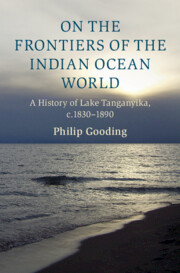Book contents
- On the Frontiers of the Indian Ocean World
- Cambridge Oceanic Histories
- On the Frontiers of the Indian Ocean World
- Copyright page
- Dedication
- Contents
- Figures
- Acknowledgements
- Note on the Text
- Abbreviations
- Introduction
- Part I Demarcations of Space
- 1 The Growth of ‘Emporia’
- 2 Changing Land Use in a Changing Climate
- 3 Traversing the Lake
- Part II Interactions
- Epilogue
- Glossary
- Bibliography
- Index
3 - Traversing the Lake
from Part I - Demarcations of Space
Published online by Cambridge University Press: 21 July 2022
- On the Frontiers of the Indian Ocean World
- Cambridge Oceanic Histories
- On the Frontiers of the Indian Ocean World
- Copyright page
- Dedication
- Contents
- Figures
- Acknowledgements
- Note on the Text
- Abbreviations
- Introduction
- Part I Demarcations of Space
- 1 The Growth of ‘Emporia’
- 2 Changing Land Use in a Changing Climate
- 3 Traversing the Lake
- Part II Interactions
- Epilogue
- Glossary
- Bibliography
- Index
Summary
Chapter 3 uses archival and anthropological sources to examine human encounters with Lake Tanganyika itself. The lake was a source of food, a barrier to cross, and the subject of religious and political innovation. How these features of human–lake encounters were understood shifted over time in ways that were related to the exchange of cultures and fluctuations in the lake’s level. In general terms, these shifts can be summed up as the ‘commercialisation’ of encounters with the lake, which affected how people crossed it, their motivations for doing so, and their means of appeasing spirits they believed to inhabit it. Technology, environmental factors, and religious paradigms with links to the wider Indian Ocean World affected how people crossed, used, and interpreted conditions on the lake.
- Type
- Chapter
- Information
- On the Frontiers of the Indian Ocean WorldA History of Lake Tanganyika, c.1830-1890, pp. 96 - 118Publisher: Cambridge University PressPrint publication year: 2022

